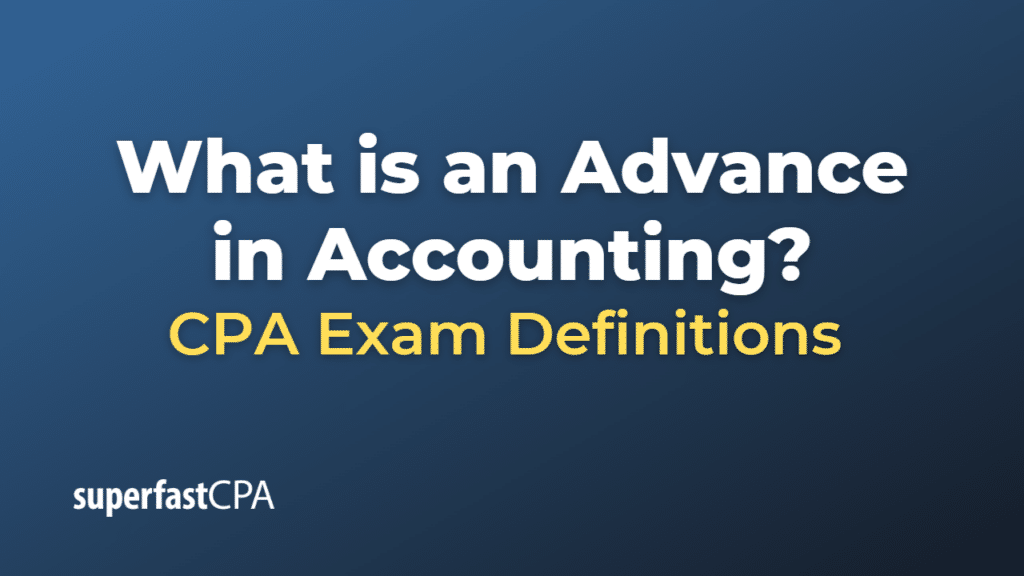Advance
In accounting, an advance refers to a payment made before the actual delivery of goods or services or the completion of work. Advances are usually made in situations where the payee requires funds upfront to cover their costs or ensure the commitment of the payer to the agreed-upon transaction.
There are several types of advances in accounting, including:
- Employee advances: These are payments made to employees before their regular payday. This could be for various reasons, such as travel expenses, emergency funds, or an advance against future salary.
- Customer advances or deposits: These are payments received from customers before the goods are delivered or services are rendered. This is common in industries where production takes a long time or requires significant capital investment, such as construction or manufacturing.
- Vendor or supplier advances: These are payments made to suppliers before receiving goods or services. This can occur when a business wants to secure a favorable price, ensure the availability of a product, or comply with the supplier’s payment terms.
In accounting, advances are typically recorded as either assets or liabilities, depending on the nature of the transaction. For example, if a business receives an advance payment from a customer, it would be recorded as a liability (unearned revenue) because the company owes the customer the goods or services. On the other hand, if a business gives an advance payment to a supplier, it would be recorded as an asset (prepaid expense) because the company expects to receive goods or services in the future.
Example of an Advance
Let’s look at an example for both a customer advance and a supplier advance.
- Customer advance:
Imagine a software development company, XYZ Tech, has been contracted to create a custom software solution for a client. The client agrees to pay XYZ Tech $20,000 for the project, with $5,000 upfront as an advance payment.
When XYZ Tech receives the $5,000 advance payment, it would record the transaction as follows:
Debit: Cash (Asset) – $5,000
Credit: Unearned Revenue (Liability) – $5,000
As XYZ Tech completes portions of the project and earns the advance payment, it would reclassify the unearned revenue as earned revenue:
Debit: Unearned Revenue (Liability) – $X
Credit: Revenue (Income) – $X
- Supplier advance:
Suppose XYZ Tech needs to purchase specialized hardware for the software project, costing $2,000. The hardware supplier requires a 50% advance payment to secure the order. XYZ Tech pays the $1,000 advance as follows:
Debit: Prepaid Expenses (Asset) – $1,000
Credit: Cash (Asset) – $1,000
When XYZ Tech receives the hardware, it would record the transaction by reclassifying the prepaid expense as the actual expense:
Debit: Hardware Expense (Expense) – $1,000
Credit: Prepaid Expenses (Asset) – $1,000
In both examples, the advance payment is recorded as a liability (in the case of the customer advance) or an asset (in the case of the supplier advance) until the related goods or services are delivered or consumed.













